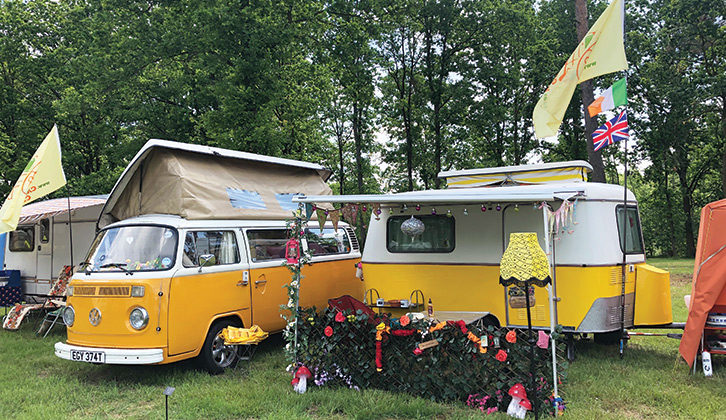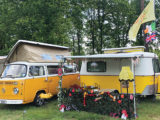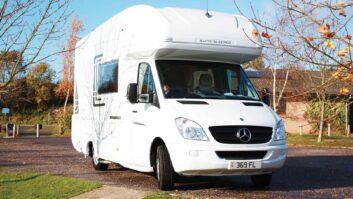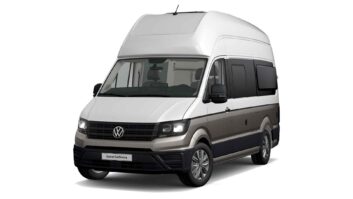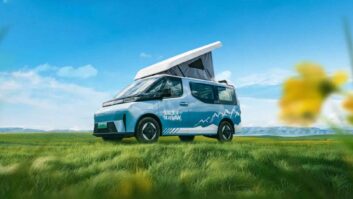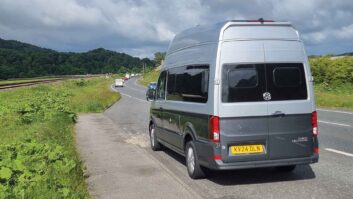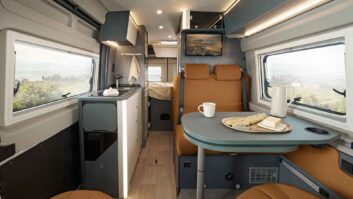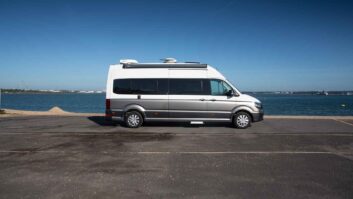The 75th anniversary of the Volkswagen campervan was celebrated on April 23rd, with the iconic vehicle having undergone quite a journey since it was initially a concept sketch in 1947. To mark the anniversary of a sketch that would go on to create such a famous vehicle, Just Kampers have taken a look at the history of the Volkswagen campervan.
The initial concept was sketched by Dutch businessman Ben Pon on April 23 1947. It was a Beetle-based vehicle – a rounded box on wheels – yet despite being a simple design, it motivated Volkswagen (VW) to create the Type 2 Transporter (T2).
In November 1949, the T2 launched at the Geneva Motor Show, before mass production began in 1950. Initially, 10 vehicles were made a day, with more than five million made over forty years.
Over the following years, the Westfalia was introduced – the name for these came from a contractor who built the vans and came from Germany’s Westphalia region.
It was during the 1960s that the VW became a true cultural icon though, with the counterculture movement synonymous with images of a T2 that has vivid paintwork.
As the 60s drew to a close, it was time for a new model to be added – the ‘Late Bay’. This was an upgraded version of the 1968 ‘Early Bay’, and had a refreshed appearance that included square style bumpers. The indicators were also moved up to the new grill, and it was more reliable, thanks to the choice of larger engine sizes.
In 1979, T2 production came to an end, with the T25 introduced instead. The luxurious Caravelle followed two years later, while a water-cooled 1600cc diesel engine with 50bhp was also added.
The 80s saw numerous improvements, ranging from air-cooled engines and front suspension to new exhaust and fuel injection systems.
During the 90s, production of the T25 came to an end in Hanover, although carried on in South Africa until 2002. The T25 was replaced by the T4, a medium-sized van that had a front engine and front wheel drive drivetrain.
As we entered the new century, the VW saw plenty of development, as the T5 was released. Changes included new engines, seven speed double clutch gearboxes, and eventually, the T6.
The 2017 Detroit Auto Show saw the VW ID Buzz, the first all-electric concept, introduced. It’s been spotted being tested publicly in 2022, and is set to arrive as both a leisure and commercial van.
Steve Gosling, marketing director at Just Kampers, said: “The VW campervan is one of the most recognisable silhouettes in modern culture. It began as an impressive concept in vehicle manufacturing that evolved into a social symbol of the 1960s and ensuing counterculture.”
“VW campervans are iconic and have also been the key to people discovering a whole new way of life. The #VanLife trend has boomed since the COVID-19 pandemic and provided people with a sense of freedom in a lockdown world. It is undisputedly one of the most culturally important vehicles of all time.”
Are you planning to head off on tour this summer and want some holiday inspiration? Then be sure to take a look at our best campervan sites guide.
Thinking of buying a pre-owned VW for yourself? See what we made of buying a pre-owned VW Grand California.
If you’ve enjoyed reading this article, why not get the latest news, reviews and features delivered direct to your door or inbox every month. Take advantage of our brilliant Practical Motorhome magazine SUBSCRIBERS’ OFFER and SIGN UP TO OUR NEWSLETTER for regular weekly updates on all things motorhome related.
